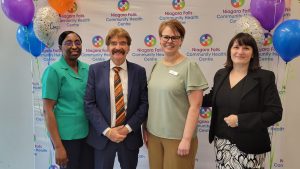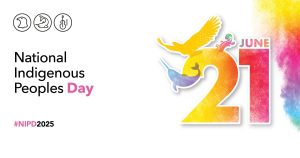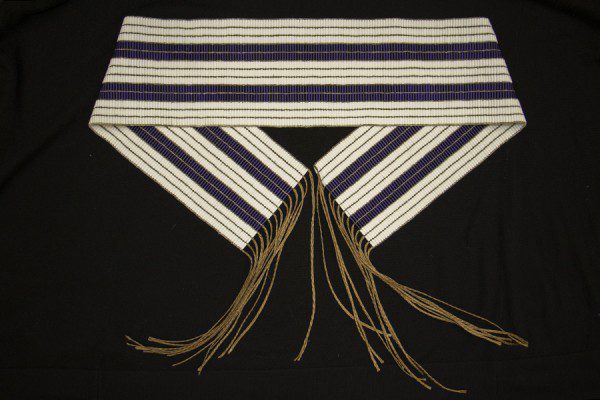When hundreds — and eventually thousands — of evacuees from Northern Ontario and Manitoba arrived in Niagara this spring and summer, they brought with them stories of upheaval, resilience and hope. Families displaced by wildfires and floods found themselves far from home, living in hotels in Niagara Falls, uncertain when — or if — they might return. Despite this displacement, evacuees demonstrated unwavering strength, resilience, collaboration and leadership, drawing on community support, and a collective spirit to adapt and rebuild during unprecedented times.
Behind the headlines, a quiet but extraordinary effort of collaboration and cultural strength unfolded within our region. More than 5,000 evacuees were supported in Niagara since May, with as many as 3,000 at one time. Meeting the health and social needs of entire communities — sometimes overnight — required nimbleness, resources, and above all, a deep commitment to human dignity. The response and support did not always meet the need in the moment, however, the dedication and commitment was ever present.
The Scale of the Response
Caring for thousands of evacuees was no small feat. Entire families and communities with very diverse needs had been displaced and were now living in hotels across Niagara Falls. Health care teams quickly set up primary care clinics inside those hotels to ensure access to essential health and social services. At the peak, three dedicated teams from De dwa da dehs nye>s Aboriginal Health Centre and REACH Niagara operated Monday to Friday (and numerous times on weekends and holidays as well), providing walk-in care for evacuees who needed everything from prescriptions to urgent primary care interventions.
Partnerships that Made it Possible
This effort would not have been possible without collaboration. De dwa da dehs nye>s led the primary care response, focusing on what they could provide —safe, accessible, Indigenous-led primary care. Learning from past experiences of burnout, the team set clear boundaries to protect staff wellbeing, ensuring care could be sustained over several months.
They did not stand alone. Some partners, like Niagara EMS and Niagara Health’s Indigenous Health Services and Reconciliation team, also navigated intensified service demands. With no option to set limits, these small but dedicated teams worked extended hours, embodying commitment and compassion at its highest level.
REACH Niagara brought mobile, on-demand care expertise to the table, a natural fit for evacuees facing sudden displacement. Marchese Pharmacy and Queen’s Pharmacy ensured medications were available without interruption. Six Nations Health Services deployed members of its clinical team. The Indigenous Diabetes Health Circle and the Fort Erie Native Friendship Centre provided cultural supports. Ontario Health West played a key role in bridging the gap between Indigenous Patient Navigators, hospitals, and community care—helping to ensure that no one was left behind. To support the effort, Indigenous Patient Navigators were redeployed from other Aboriginal Health Access Centres and hospitals across the region.
Together, these partnerships created a safety net strong enough to support thousands of evacuees, each arriving with unique needs and challenges.
Caring for the Whole Person
The evacuee experience was not only medical, but also deeply personal and cultural. Communities arrived with vastly different needs, from routine health supports to needs associated with more complex needs, including mental health and substance use concerns stemming from on-going trauma. Addressing these realities required care that was not only clinical, but also culturally grounded.
Traditional supports—such as sweat lodges, smudging, and feasts—offered more than ceremonies; they provided balance, belonging, and identity. For many, seeing a familiar face, a smudging ceremony or access to cultural food was as healing as medical treatment. These moments reminded evacuees that they were not alone, even in a strange and overwhelming environment like Niagara Falls, with its tourist bustle and unfamiliar landscape.
Humour and resilience also played a role. Community gatherings, celebrations, and even impromptu performances helped lighten the atmosphere, showing the incredible strength of evacuees in the face of immense hardship.
Staff and Community Resilience
For frontline staff, the experience was deeply meaningful. They described the work as some of the most impactful of their careers, filled with “good news stories” of making real differences in people’s lives. As importantly, by sharing the need to provide supports, Indigenous-led providers were able to preserve their team’s wellbeing.
Gratitude and Recognition
As we reflect on the past months, gratitude must be at the heart of any story told. Gratitude to the staff and volunteers who chose to serve. Gratitude to the communities who trusted local organizations with their care. Gratitude to the people of Niagara Falls, who welcomed evacuees with open arms, despite the sudden and massive scale of need.
This was more than an emergency response; it was a demonstration of what happens when communities come together in partnership, respect, and identity-affirming care.
Looking Ahead
Repatriation flights took place throughout the summer, with the remaining evacuees having left Niagara Falls in mid-September. As hydro is not yet restored in some First Nation communities, some evacuees remain in Winnipeg hotels and are expected to return home by early October.
Unfortunately, this will not be the last time Northern communities are forced to evacuate due to wildfires or floods. Climate change is making these events more frequent and more severe. Niagara may again be called upon to host evacuees in the years ahead.
What gives us confidence is the way our region responded this year. Despite challenges, the collective effort — Indigenous and non-Indigenous organizations working side by side — showed what is possible. We can build on this experience, strengthening our understanding of how to provide care within a context of cultural humility, deepening collaboration and ensuring even greater readiness for the future.
Because at the heart of this story is not just logistics or numbers — it’s people. People who lost so much, including their homes, yet, here, found our efforts to provide safety and care. People who carried and shared their culture, humour and resilience into unfamiliar spaces. People who showed that even in times of crisis, compassion and collaboration can carry us forward.
Truth and Reconciliation in Action
As we mark the National Day for Truth and Reconciliation on September 30, these stories take on deeper significance. The displacement of Indigenous communities is not just a climate crisis—it also reflects the historic inequities and systemic barriers that Indigenous Peoples continue to face.
This summer’s response in Niagara showed reconciliation in action: Indigenous-led organizations taking the lead, supported by allies and partners, working to ensure care was culturally safe, respectful, and responsive.
Truth and Reconciliation calls us to listen, to learn, and to act. By standing with Indigenous communities in times of crisis—and in times of rebuilding—we move one step closer to a health system, and a society, that truly reflects respect, partnership, and equity.
*Recognition for support is also shared with the following organizations: Xpera, Six Nations Elected Council, Six Nations Department of Well-Being, Six Nations Health Services, Six Nations Mental Health, Niagara Chapter-Native Women, Inc., Canadian Mental Health Association and its local branches, Weecheetowin Support Services, Indigenous Services Canada, Niagara Region, Ontario Health atHome, Niagara Health, St. Joseph’s Healthcare Hamilton Indigenous Wellness Team, Dalton Associates, Ministry of Health, Indigenous colleagues from the Province of Manitoba, Indigenous Services Canada, Niagara Regional Police Service, Contact Niagara for Children’s and Developmental Services, Youth Wellness Hub Niagara, Positive Living Niagara, Southeast Resource Development Council, Quest Community Health Centre, March of Dimes, Seratauga Family Neuropathic, Dr. Felicia Assenza, Dr. Madeleine Elton, Dr. Melanie Craig, Hamilton Family Health Team, Hamilton Program for Schizophrenia, Service Ontario, Northern Health Region of Manitoba, and Service Canada.
Tara Galitz
Executive Director
Niagara Ontario Health Team – Équipe Santé Ontario Niagara



 On June 21, the Niagara Ontario Health Team – Équipe Santé Ontario Niagara (NOHT-ÉSON) proudly joins communities across the country in honouring National Indigenous Peoples Day—a time to celebrate the vibrant cultures, enduring languages, and diverse traditions of First Nations, Inuit, and Métis Peoples. This is also a time to reflect on our relationships with each other, the Treaties between our peoples such as the Two Row Wampum and commitment to respecting them.
On June 21, the Niagara Ontario Health Team – Équipe Santé Ontario Niagara (NOHT-ÉSON) proudly joins communities across the country in honouring National Indigenous Peoples Day—a time to celebrate the vibrant cultures, enduring languages, and diverse traditions of First Nations, Inuit, and Métis Peoples. This is also a time to reflect on our relationships with each other, the Treaties between our peoples such as the Two Row Wampum and commitment to respecting them.
